
He 100D-1 / 113
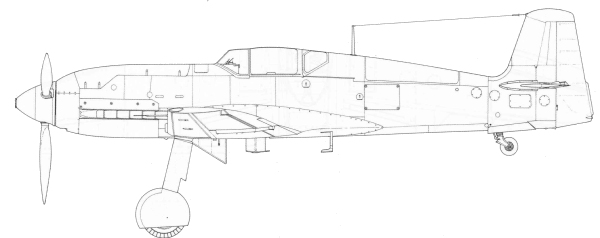
The Heinkel 100 was Earnst Heinkel's last attempt to get a production fighter contract. After putting much time and effort into the He 112 only to have it refused for production, his company design team went all out to produce a fighter that could also set a world speed record. While they were successful in setting a record, Heinkel did not have the connections at high levels that Messerschmitt had and in the end it was decided that Messerschmitt would build the primary fighter for the Luftwaffe and Heinkel would build bombers. The He 100 was powered by the Daimler Benz DB 610 engine and armament consisting of a 20 mm cannon firing through the propeller hub and two 7.9 mm mounted in the wing roots. It used a system of surface evaporation panels to dissipate then engine heat. This was a some what complex system of plumbing and ducts, how well it would have survived in combat is an unknown. Heinkel believed that because the system was a low pressure system it would have been less prone to combat damage than normal high pressure systems used on most liquid cooled engined aircraft. There were three preproduction machines built and twelve production machines. These were all a private venture by Heinkel as no production order from the Luftwaffe was forth coming. The German propaganda ministry put these aircraft to good use putting phony markings on them and posing them at different airfields in an attempt that was mostly successful to dupe the allies into thinking this was the Luftwaffe's newest fighter. While none were ever flown in combat, a number of British pilots claimed to have shot one down.
It's
interesting to speculate whether a fighter like the He 100 with its
higher speed and longer range would have made a difference in the
outcome of the Battle of Britain.
The Kit
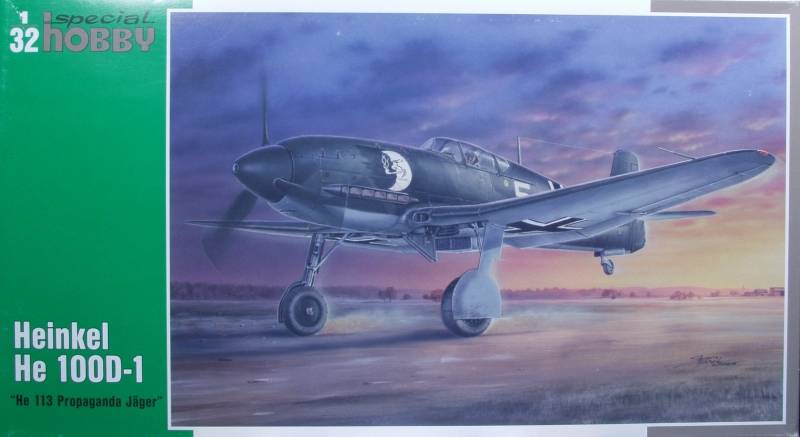
I am not going to provide the usual review of this kit as I jumped in and started building it before photographing the sprues.
I also am not doing a build log like I normally do as I ended up building this as a filler between steps on other builds and did not take the time to photograph the steps.
So in this case all I have are completion photos as shown below.
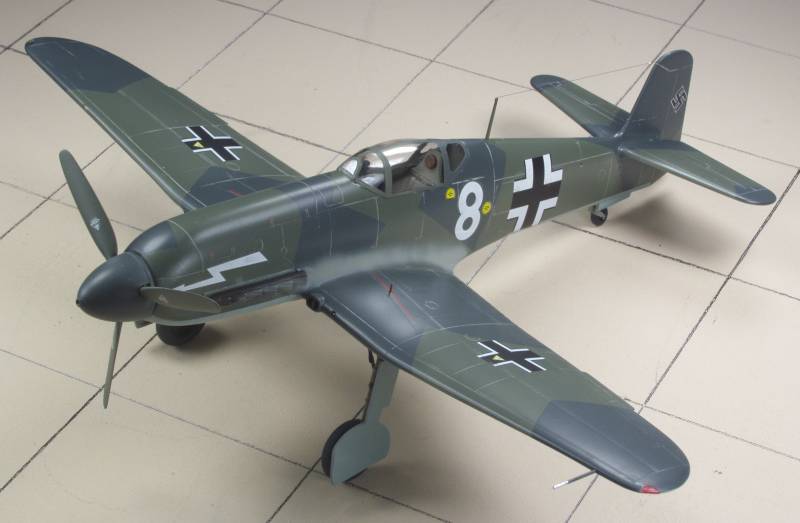
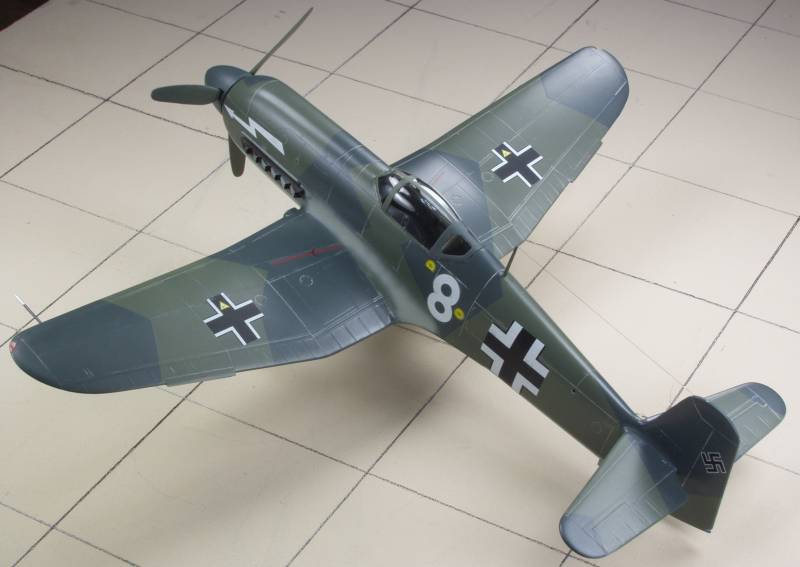
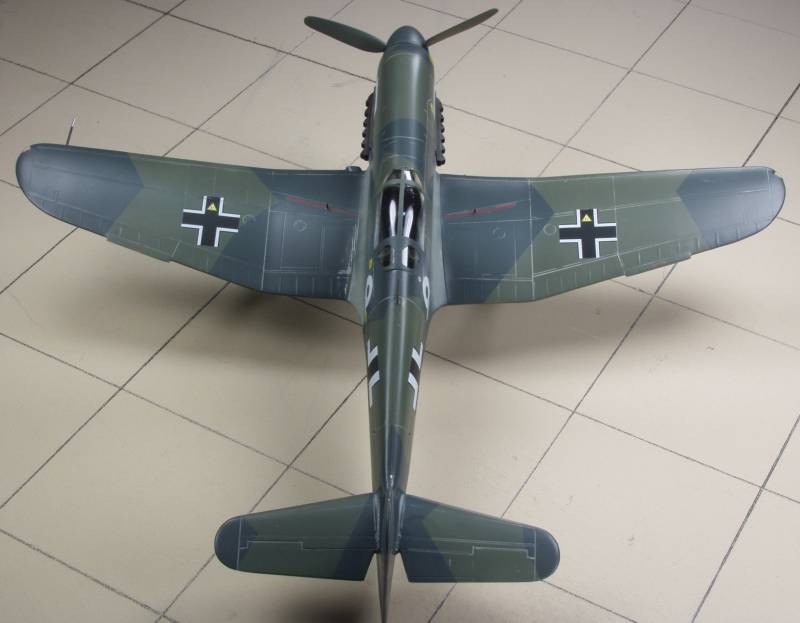
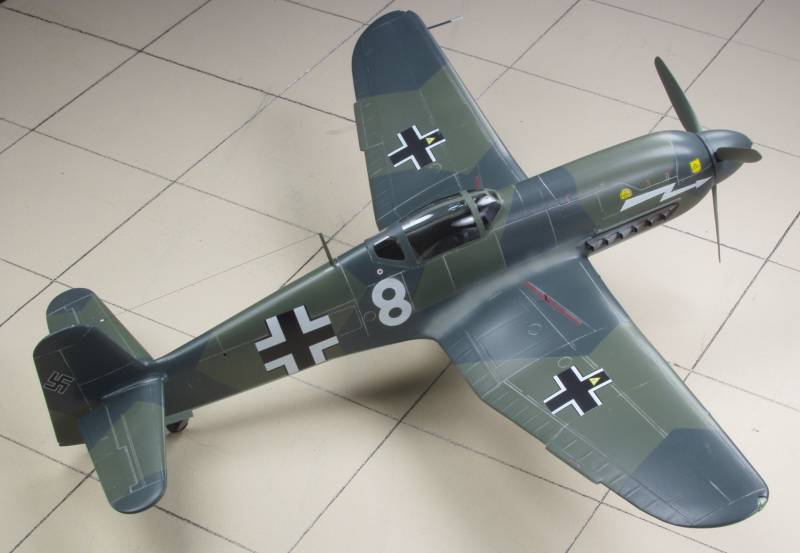
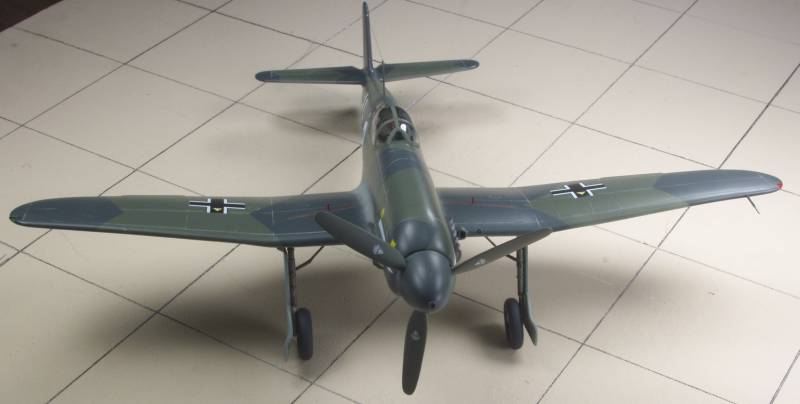
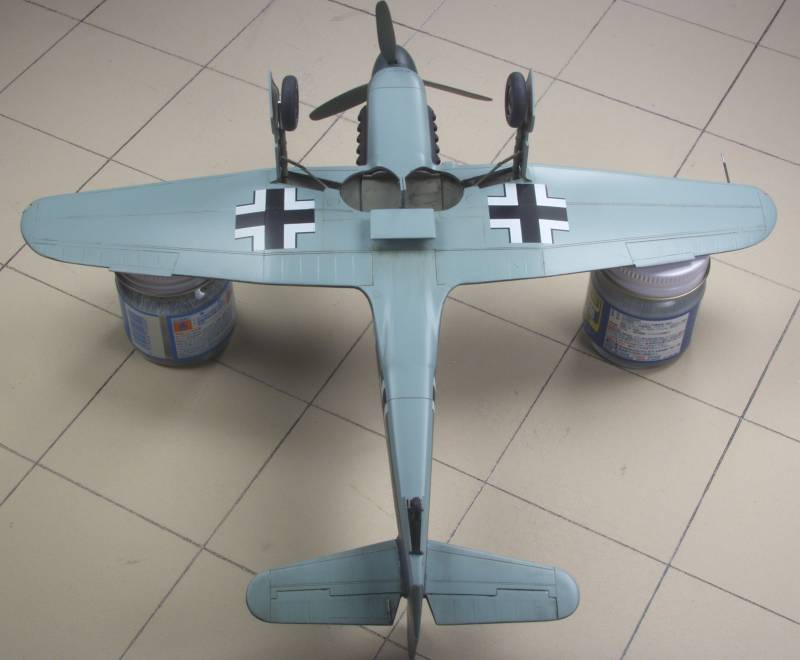
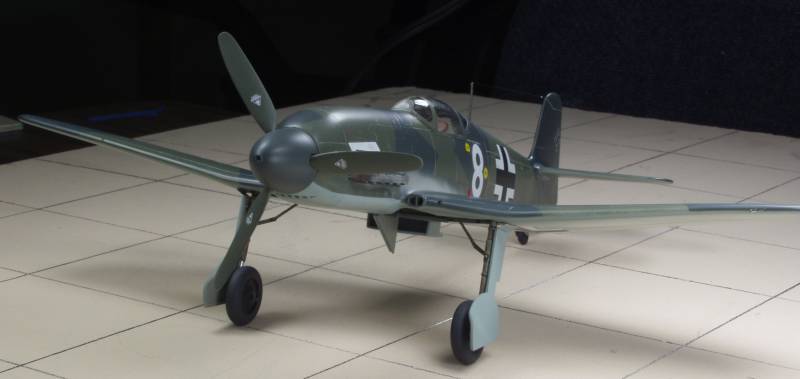
I kept the weathering light as these planes never saw any actual combat. I could have gone a bit heavier as photos show some variable amount of weathering and according to the information I have the areas of the skin where the surface evaporation was located tended to fade out rather quickly, although I did not see that all that much in the available photos. I assume that since their primary purpose was propaganda that they were kept reasonably clean and touched up with just enough wear to look like they might have been in use.
I did add a few touches that weren't supplied in the kit, I added the splitter to the carb intake in the wing, gun blast tubes and gun barrels as the kit only had faint impressions in the wing where they were located. I replaced the gun barrels supplied with the kit that pass through the gear bays with hypo tubing. Also added the gear down peg indicators on the wings.
After Market Goodies
There are none specific to this kit that I am aware of.
Conclusions
This kit built up fairly well for a limited run kit, there were some gaps to fill here and there, most notably on the wing to fuselage join at the front and rear on the bottom. The cockpit detail location is rather vague and I end up added some styrene strip to located the floor until the fuselage was glued together. Detail is a bit sparse but enough considering there is not a lot in the way of documentation and it can't be seen all that well anyway ! Probably the worst fitting part of the whole kit is the canopy which is too wide for the opening. I did manage to squeeze it a bit while attaching but from the right angle it still shows. Assembly like most short run kits requires a lot of test fitting. The decals were a bit opaque but not so bad in my opinion to be unusable. They went on well and settled down with a little Microset. Overall I enjoyed build the kit and found it to be one of the better short run kits and would recommend it to anyone who has some experience with this type of kit.
Links to kit build or reviews
A build review can be found here.
References
Military Aircraft In Detail - Heinkel 100 by Erwin Hood
Heinkel 100, 112 Aero Series #12 by R.S. Hirsch and Ewe Feist
Back to the 1/32 German Aircraft Page